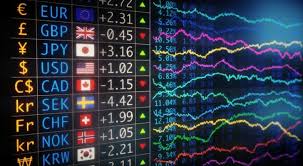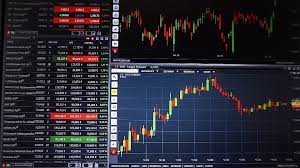Mastering Forex Trading with TradingView A Comprehensive Guide 1729870641

Forex trading has gained immense popularity in recent years, becoming an attractive investment opportunity for many. With the advent of superior trading platforms like trading forex in tradingview Trading Platform HK, traders can now effectively analyze and execute trades in real-time, making the forex market more accessible than ever. This comprehensive guide delves into utilizing TradingView for forex trading, providing insights, strategies, and essential tips to enhance your experience.
Understanding Forex Trading
Forex, short for foreign exchange, refers to the global marketplace where currencies are traded. With an average daily trading volume exceeding $6 trillion, forex is the largest financial market in the world. Unlike stock markets, the forex market operates 24 hours a day, providing traders with flexibility to trade at their convenience.
The Benefits of Trading Forex
- High Liquidity: Make quick trades and reduce the impact of slippage.
- Leverage: By using leverage, traders can increase their exposure to the market with a smaller amount of capital.
- Accessibility: Forex is open 24 hours, providing opportunities for traders worldwide.
- Diverse Trading Options: Trade a multitude of currency pairs, each with unique characteristics.
Why Choose TradingView for Forex Trading?
TradingView is a cloud-based charting platform and social network that caters to traders and investors. It provides powerful charting tools, market analysis, and community features that make it an essential resource for forex traders. Here are some reasons why you should consider using TradingView:
1. User-Friendly Interface
The platform boasts a clean, intuitive design, making it easy for users of all experience levels to navigate. Whether you are a beginner learning the ropes or an experienced trader, TradingView’s interface allows for easy access to essential features.
2. Advanced Charting Tools
TradingView offers a variety of charting tools that are essential for effective technical analysis. Traders can customize charts by adding various indicators, drawing tools, and overlays to analyze market trends and price movements. Some popular technical indicators available are Moving Averages, RSI, MACD, and Bollinger Bands.
3. Real-Time Data
Access live market data and price quotes that help traders make informed decisions. The ability to view real-time prices enables traders to react quickly to market changes, which is crucial in the fast-paced forex market.

4. Social Networking Features
TradingView allows users to share their ideas, insights, and analyses with a broad community of traders. By following other traders and joining discussions, you can learn strategies and techniques that can enhance your trading approach.
5. Custom Alerts
Setting up custom alerts based on price levels or indicator conditions ensures that you do not miss crucial trading opportunities. The alerts can be received through notifications on your mobile device or via email, enabling you to stay updated on market movements even when you are not actively trading.
Getting Started with Forex Trading on TradingView
To embark on your forex trading journey using TradingView, follow these steps:
Step 1: Create an Account
Sign up for a free TradingView account, which offers various premium plans with additional features. The free version is suitable for most beginners, allowing you to explore the platform’s functionalities.
Step 2: Access the Charting Feature
Once registered, navigate to the charting section. Here, you can select currency pairs to analyze, such as EUR/USD, GBP/JPY, or AUD/CAD. Use the search bar to quickly find your preferred pairs.
Step 3: Customize Your Charts
Utilize the plethora of available indicators to suit your trading strategy. You can customize the chart types (candlestick, line, bar), colors, and layout to create a personalized trading experience.
Step 4: Conduct Analysis

Perform technical analysis using your preferred indicators and chart patterns. Look for trends, support and resistance levels, and other signals that guide your trading decisions.
Step 5: Practice with a Demo Account
Before diving into live trading, practice your skills with a demo account. This allows you to test your strategies and familiarize yourself with the TradingView platform without risking real capital.
Trading Strategies for Forex on TradingView
There are numerous trading strategies you can deploy on TradingView, depending on your style and risk appetite. Here are a few popular strategies:
1. Trend Following
This strategy involves analyzing price movements and following the prevailing trend. Utilize indicators like Moving Averages to identify uptrends and downtrends, entering trades in the direction of the trend.
2. Breakout Trading
Breakout trading capitalizes on price movements when assets break through key support or resistance levels. Traders can enter a position when the price breaks through these levels, anticipating further market movement.
3. Range Trading
For traders seeking less volatility, range trading involves identifying the upper and lower boundaries of a currency pair. Trades are executed when prices bounce off these levels, taking advantage of price oscillation within the range.
Conclusion
Forex trading on TradingView provides traders with powerful tools, real-time insights, and community support, making it an ideal platform for both beginners and seasoned investors. By leveraging the advanced features available, traders can refine their strategies and implement effective trading techniques, ultimately enhancing their trading experience and outcomes. Embrace the world of forex trading today and explore the possibilities that TradingView has to offer.
